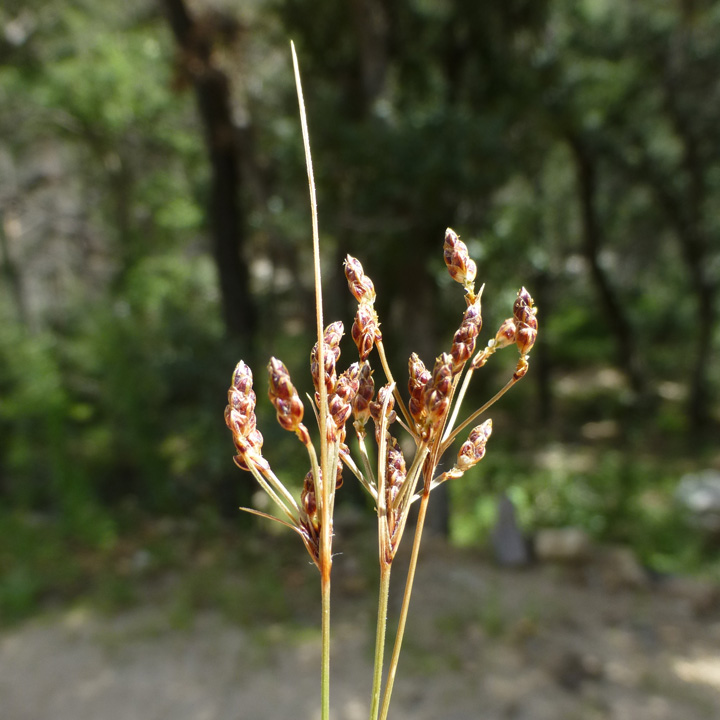Bulbostylis
|
Family: Cyperaceae |
Herbs, annual or perennial, cespitose, scapose, not rhizomatous. Roots diffuse, very fine. Culms stiff or flaccid, usually terete, ribbed. Leaves basal, polystichous, spreading to ascending; sheaths open apically, apex fimbriate-ciliate, rarely entire; ligules absent, lateral tufts of hair at junction of blade and sheath; blades mostly linear or filiform, coarsely ribbed, usually longer than sheaths, 1 mm wide or less, mostly strongly involute, margins variably scabrid-ciliate. Inflorescences terminal on slender scapes, rarely axillary to culm leaves, simple or compound anthelae or spikelet solitary; spikelets 1-50+; involucral bracts (1-)2-8, spreading or erect, leaflike or scalelike. Spikelets mostly ovoid to lanceoloid or lance-cylindric; scales 6-50, spirally arranged, rarely nearly distichous, each subtending flower or 1-2 proximal scales empty. Flowers bisexual; perianth absent; stamens 1-3; styles slender, (2-)3-fid, glabrous, base enlarged, persistent in fruit. Achenes trigonous or 3-lobed, rarely biconvex, usually 3-ribbed. Culms of bulbostylises are coarse or fine, leafy only at the base, and terminating in scape (or rarely not scapose). Scapes are linear to filiform, wiry, variously ribbed. Spikelets or florets are short-stalked, even sessile in leaf axils. Flowers are protandrous and subsessile on short pedicellar joints; anthers are mostly linear-oblong or oblong-elliptic, two- to four-sporangiate, bilocular; style base is articulated to ovary summit and persists on fruit as buttonlike tubercle.
Spikelets mostly in simple or compound, often umbelliform cymes (or virtually a head) forming a terminal infl subtended by 2-several slender, ±lf-like invol bracts; scales spirally imbricate; fls perfect; perianth none; stamens 1-3; style trifid, the unbranched portion smooth, the base enlarged and usually persistent on the trigonous achene as a tubercle (minute in our spp.); radicle basal; herbs with mostly basal, filiform to narrowly linear lvs, the sheath long-ciliate or fimbriate at the top. 80+, mainly trop. B. stenophylla (Elliott) C. B. Clarke, a coastal plain sp., closely approaches our range in N.C. and may be sought in se. Va. The stems have a single dense terminal cluster of virtually sessile spikelets, subtended by elongate, setaceous invol bracts. Gleason, Henry A. & Cronquist, Arthur J. 1991. Manual of vascular plants of northeastern United States and adjacent Canada. lxxv + 910 pp. ©The New York Botanical Garden. All rights reserved. Used by permission. |

